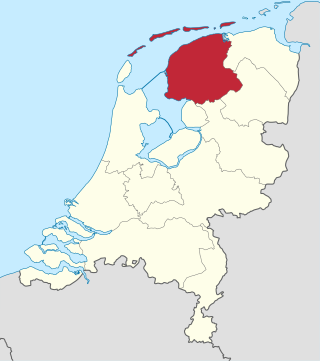
Friesland, historically and traditionally known as Frisia, named after the Frisians, is a province of the Netherlands located in the country's northern part. It is situated west of Groningen, northwest of Drenthe and Overijssel, north of Flevoland, northeast of North Holland, and south of the Wadden Sea. As of January 2023, the province had a population of about 660,000, and a total area of 5,753 km2 (2,221 sq mi).

Leeuwarden is a city and municipality in Friesland, Netherlands, with a population of 127,073 (2023). It is the provincial capital and seat of the Provincial Council of Friesland.

The House of Orange-Nassau is the current reigning house of the Netherlands. A branch of the European House of Nassau, the house has played a central role in the politics and government of the Netherlands and elsewhere in Europe, particularly since William the Silent organised the Dutch Revolt against Spanish rule, which after the Eighty Years' War (1568–1648) led to an independent Dutch state. William III of Orange led the resistance of the Netherlands and Europe to Louis XIV of France and orchestrated the Glorious Revolution in England that established parliamentary rule. Similarly, Queen Wilhelmina of the Netherlands was instrumental in the Dutch resistance during World War II.
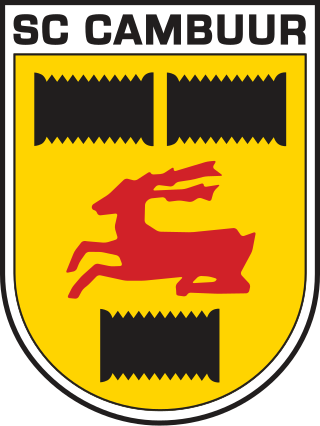
SC Cambuur, also known as Cambuur Leeuwarden, or simply Cambuur, is a Dutch professional football club from the city of Leeuwarden formed on 19 June 1964. They currently play in the Eerste Divisie, the second tier of Dutch football, following relegation from the Eredivisie in the 2022–23 season. The home ground of the club is the 15,000-capacity Kooi Stadion, which opened in 2024. The club usually plays in yellow shirts and blue shorts. The origin of the club's emblem is the coat of arms of the House of Cammingha, a Frisian noble family. Their main rivals are SC Heerenveen.

Sportclub Heerenveen is a Dutch professional football club from Heerenveen. They currently play in the Eredivisie, the top level of football in the Netherlands. The club is known for its Frisian identity.
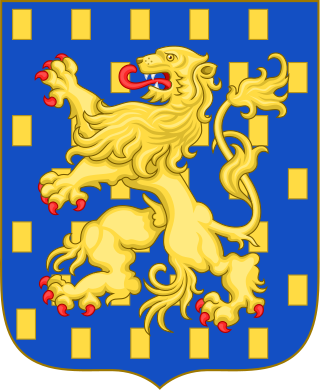
The House of Nassau is a diversified aristocratic dynasty in Europe. It is named after the lordship associated with Nassau Castle, located in present-day Nassau, Rhineland-Palatinate, Germany. With the fall of the Hohenstaufen in the first half of the 13th century royal power within Franconia evaporated and the former stem duchy fragmented into separate independent states. Nassau emerged as one of those independent states as part of the Holy Roman Empire. The lords of Nassau were originally titled "Count of Nassau", subject only to the Emperor, and then elevated to the princely class as "Princely Counts". Early on they divided into two main branches: the elder (Walramian) branch, that gave rise to the German king Adolf, and the younger (Ottonian) branch, that gave rise to the Princes of Orange and the monarchs of the Netherlands.
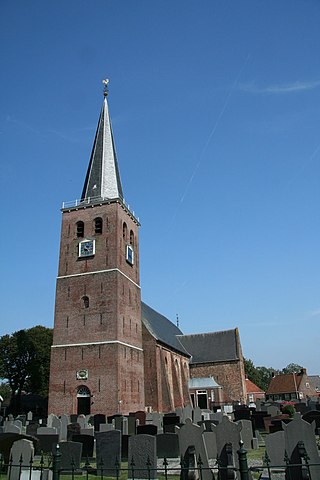
Hallum is a village in the province of Friesland, the Netherlands. It is a village in the municipality of Noardeast-Fryslân and it had a population of around 2,746 in January 2017. The primary language spoken is West Frisian. Before 2019, the village was part of the Ferwerderadiel municipality. The monastery Mariëngaarde was located in Hallum between 1163 and 1578.

The House of Limburg-Stirum, which adopted its name in the 12th century from the immediate county of Limburg an der Lenne in what is now Germany, is one of the oldest families in Europe. It is the eldest and only surviving branch of the House of Berg, which was among the most powerful dynasties in the region of the lower Rhine during the Middle Ages. Some historians link them to an even older dynasty, the Ezzonen, going back to the 9th century.
Jancko Douwama was a Frisian nobleman who fought to free Friesland from foreign rule during the Vetkopers and Schieringers conflict, the Saxon feud and the Guelders Wars.

The Van Wassenaer family is the name of an old Dutch noble family. It was first mentioned in the County of Holland on 3 November 1200. They are one of the few original noble families from Holland that has survived to this day. Members of the family carry the title of count or baron.

Queen Elizabeth's Pocket Pistol is a cannon built in 1544 in Utrecht by Jan Tolhuys, before Elizabeth I came to the throne. The gun was presented to Henry VIII by Maximiliaan van Egmond, Count of Buren and Stadtholder of Friesland, as a gift for his young daughter Elizabeth.
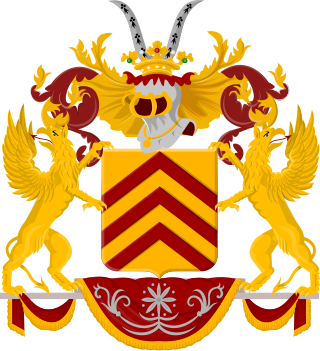
The van Voorst tot Voorst family is an old Dutch noble family from the province of Overijssel.

De Haar Castle is located outside Utrecht, Netherlands. It is the largest castle in The Netherlands.
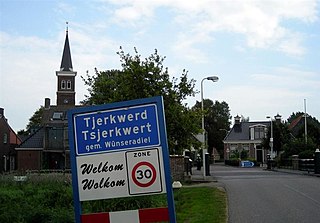
Tjerkwerd is a village in Súdwest-Fryslân municipality in the province Friesland of the Netherlands. It had a population of 455 in January 2017.

Sjaerdemaslot was a Frisian castle, a so-called "state", in Franeker, the Netherlands. In 1446 the construction of the castle was started and the state was demolished in 1727. Famous residents include the philosopher René Descartes and Duke Albert of Saxony.

The coat of arms of Hoorn is a coat of arms that has been in use since the Middle Ages. Although over time it underwent some changes, there has been no change to the coat of arms since it was acknowledged in use by the High Council of Nobility in 1816. At present, in the original form, it is the coat of arms of the municipality of Hoorn. The current municipality was formed in 1979 by merging the city of Hoorn with the villages Zwaag and Westerblokker; it was decided to use the old coat of arms as coat of arms of the new municipality.
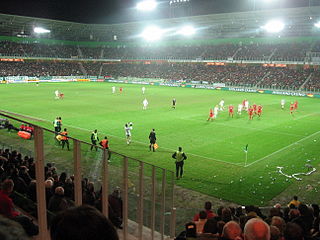
The Derby of the North is a match between the Dutch football clubs FC Groningen and SC Heerenveen. Since the dissolution of SC Veendam in 2013, there are only four professional football clubs in the three northern provinces of the Netherlands : FC Groningen, SC Heerenveen, SC Cambuur and FC Emmen. Although Heerenveen have an older and fiercer rivalry with Cambuur, the only game referred to as the Derby of the North is Groningen versus Heerenveen. This is due to Groningen and Heerenveen being seen as representing the provinces of Groningen and Friesland, whereas Cambuur is only regarded as the team of the city of Leeuwarden.
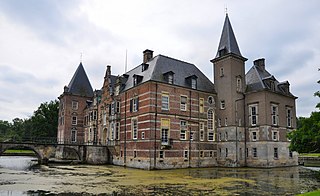
Twickel is a protected historic country estate with 81 complex parts near Delden in the hamlet of Deldeneresch, in the municipality of Hof van Twente in the province of Overijssel in The Netherlands. The moated castle forms the center.

The Liauckamastate or Liauckama State is a former stins near the Dutch village of Sexbierum, Friesland. It was one of Friesland's biggest estates and was inhabited by members of the Liauckama family. Of the old stins, only the gatehouse, farmhouse, and day labourer's house still stand.

Jarich or George van Liauckema was a Frisian nobleman and soldier in Spanish service in the Eighty Years' War. Between 1588 and 1591 Van Liauckema was governor of Zutphen. Some time after the Siege of Groningen he returned to Friesland, where in 1618 he again came into possession of the ancestral castle of the Van Liauckema family, the Liauckamastate in Sexbierum.



















